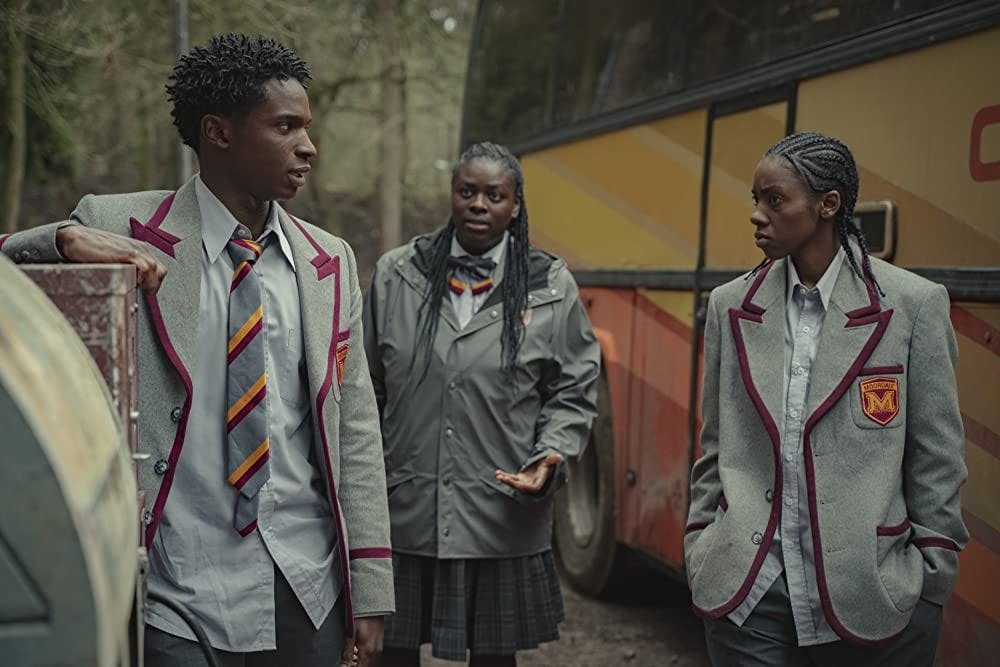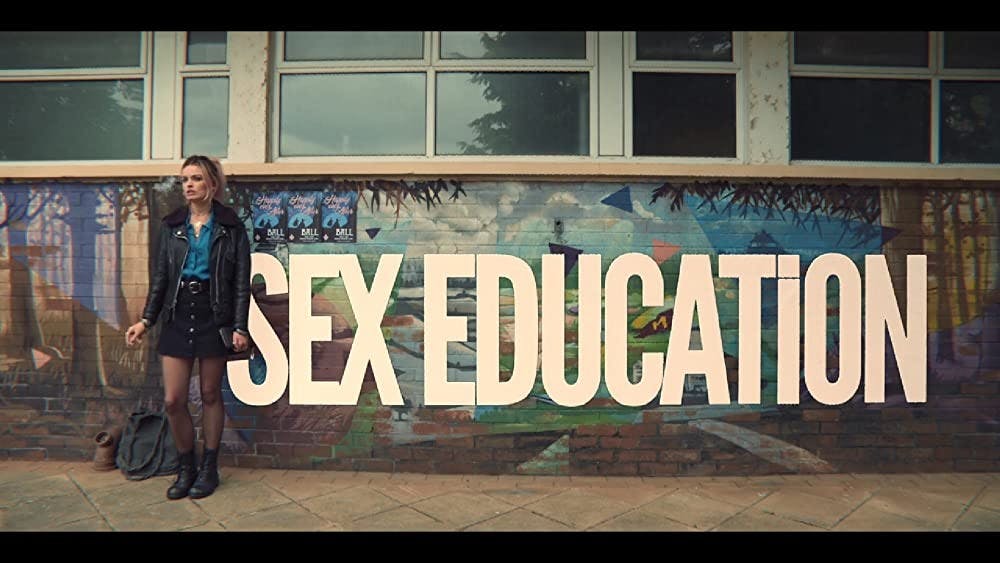Warning: This review contains spoilers for Sex Education.
Since the first season premiered in 2019, Sex Education has been a hit among young adult audiences for its diverse cast of characters and the sometimes painfully relatable moments it carries with it. The show provides believable representation for people seen on screen less often, with characters of color and characters belonging to the LGBTQ+ community, all while encouraging viewers to be themselves, and to get informed on safe-sex techniques and other controversial topics not usually taught in schools. From the plausible awkwardness of each of the teenage characters, to the familiar situations they find themselves in, the show has related to its primarily young audience since season one.The highly-anticipated third season was set to bring some turmoil for the characters. While the students are off learning at Moordale Secondary, season three begins after an unexpected pregnancy and an ignored ‘I love you’ phone call.
This season sparks a bright moment in the already influential Netflix series, as the characters fight for their rights of self-expression. With unique characters and an appealing plotline, Sex Education season three further enhances the show’s likeability.
A Twisty Plotline

Image from IMDB
While the plot of Sex Education season three is entertaining, it could benefit from better timing. Problems are resolved too quickly. In the first episode of the season, Jean is forced to inform Jakob that she is pregnant with his child. The show sets this up as a huge issue, as Jean panics and Otis constantly pushes her to tell Jakob. As soon as she does, Jakob questions whether or not he’d like to co-parent with Jean. Again, the show sets this up as a gigantic, life-changing decision that might take the whole season to make. Jakob decides he will co-parent extremely quickly; by the end of the episode. Similarly, at the end of the season, Jean experiences a hemorrhage from labor that lands her a longer stay in the hospital. This causes extreme distress for Otis as he faces the possibility of losing his mom. Again, this is solved fairly quickly. We see Otis break down once in a nearly two-minute scene, and then, almost immediately after, Jean wakes up, still recovering, but slowly returning to her normal, healthy self.
Other issues are drawn out for too long. The most obvious example of this is Maeve and Otis’s relationship. The show has been pushing this couple on viewers since the beginning of season one. By the start of the third season, the two had still not gotten together, and had both had other relationships. While Maeve briefly dated her neighbor Isaac this season, Otis was dating popular student Ruby. Ruby and Otis are adorable. They perfectly embody the ‘popular girl likes nerdy boy’ trope and it worked ridiculously well. The show, unfortunately, continued to push Maeve and Otis together, leaving a heartbroken Ruby as the slow-burn romance finally sparked. The two begin dating, and even agree to stay together when Maeve spontaneously plans to study abroad in America. For fans of the couple, this was exciting news, but based on the show’s history of messing with its characters’ relationships, it’s possible season four will show the new couple with unperceived issues.
The Groff Evolution
Throughout season three, many of the characters undergo noticeable character development as they attempt to adapt to each of their unfortunate situations. While all the characters seem to either evolve or devolve this season, the most enticing character developments were of Michael Groff and his son, Adam.

Image from IMDB
Mr. Groff starts out the season depressed and lonely, unemployed, living with his despicable brother, Peter, and missing his wife and son. His journey over the course of the season is not exactly a simple one: to redeem himself. As Mr. Groff looks at his past choices, he realizes who he is: a harsh, unaccepting man like his father. Groff eventually learns that what he truly needs is something to make him happy, a conclusion he comes to with the ever-inspiring therapist Jean. Once he digs himself out of the bitter traits passed on to him from his father, Mr. Groff is able to be himself and discover what makes him a real person. Mr. Groff’s son, Adam, has a surprisingly similar journey throughout this season. Adam is dating Eric Effiong, an out and proud gay man constantly expressing himself through his makeup and clothing, and never caring what others have to say about his sexuality and form of self-expression. Adam struggles with this quite a bit more than Eric. Growing up, he had always been taught that being gay was wrong. At the beginning of the season, Adam admits to enjoying wearing makeup but only when alone or with Eric. He also still hasn’t told his mom that he is bisexual and in a relationship with a man even though he’d known about his own sexuality since he had came back from military school at the beginning of season two. Adam also seeks to change himself, just like his dad. He begins to suffocate his violent emotions and replace them with caring ones. In a similar way to his father, Adam also searches for something that can make him truly happy, without the need to depend on Eric or someone else to lead him toward it.
Along with the Groffs, many other characters undergo a transformation this season. Otis learns about how much he loves helping people. This dates right back from the start of season one, when Otis and Maeve started their clinic together, and he became the school’s unofficial therapist. This development of his character allows viewers to get a satisfying conclusion to his inevitable career path. Maeve, unfortunately, seems to devolve in a way. Instead of falling for someone who didn’t wrong her, Maeve clings between both Otis and Isaac, who both did pretty awful things to her in the past. These character developments truly emphasize how the show has evolved itself, and allows viewers to sympathize with previously hated characters like the Groffs. All of these developments make each character seem more realistic, instead of a weirdly exaggerated person on a screen.
A Fight for Freedom
Sex Education has always been a show with a diverse cast of characters, each with their own unique identities. That’s why the introduction of Hope Haddon and her strict rules directly threatens each of the young characters. Headteacher Haddon, or as she prefers, Hope, begins her reign with a simple line that stretches through the halls, so the students will walk on the right side of the hallway. This is just the beginning, though, as Hope also forces the teaching of abstinence, instead of safe-sex techniques, and school uniforms, which must be perfectly worn along with natural colored hair, no facial piercings, and no odd makeup.

Image from IMDB
Hope’s rules take a toll on many of the characters, but it is especially seen in Cal’s character, a non-binary student who is constantly scrutinized by Hope for wearing a baggier uniform than the other students, and the character Lily, whose love for writing erotic alien fiction is squashed by Hope after one of her stories end up in the town newspaper. Cal refuses to follow Hope’s rules as they believe the rules are discriminatory and unfair to students like them, but, after being convinced by possible love interest Jackson, Cal agrees to participate in a student forum where the kids plot to overthrow Hope. While Lily, on the other hand, loses all passion for aliens, and in the process, loses herself. She starts to see herself as weird and distances herself from her friends and girlfriend. Lily eventually learns to be herself again after another student asks her to sign their copy of her published alien story, admitting to being a huge fan of her work. In the case of both characters, the journeys make sense with the overall message of the show. Lily and Cal both realize that it’s better to be themselves than to conform to someone else’s ideas, which Sex Education has been pushing since season one.
These moments of losing identity showcase exactly what Sex Education is all about: being yourself even when it’s hard. As the students are forced to fight for their freedom, the audience feels compelled to join them in their own ways. This highlights the brilliance of the show, as it not only tells a story, but inspires the viewers to join the characters in being themselves without apologies.

Images: IMDB
Featured Image: IMDB





